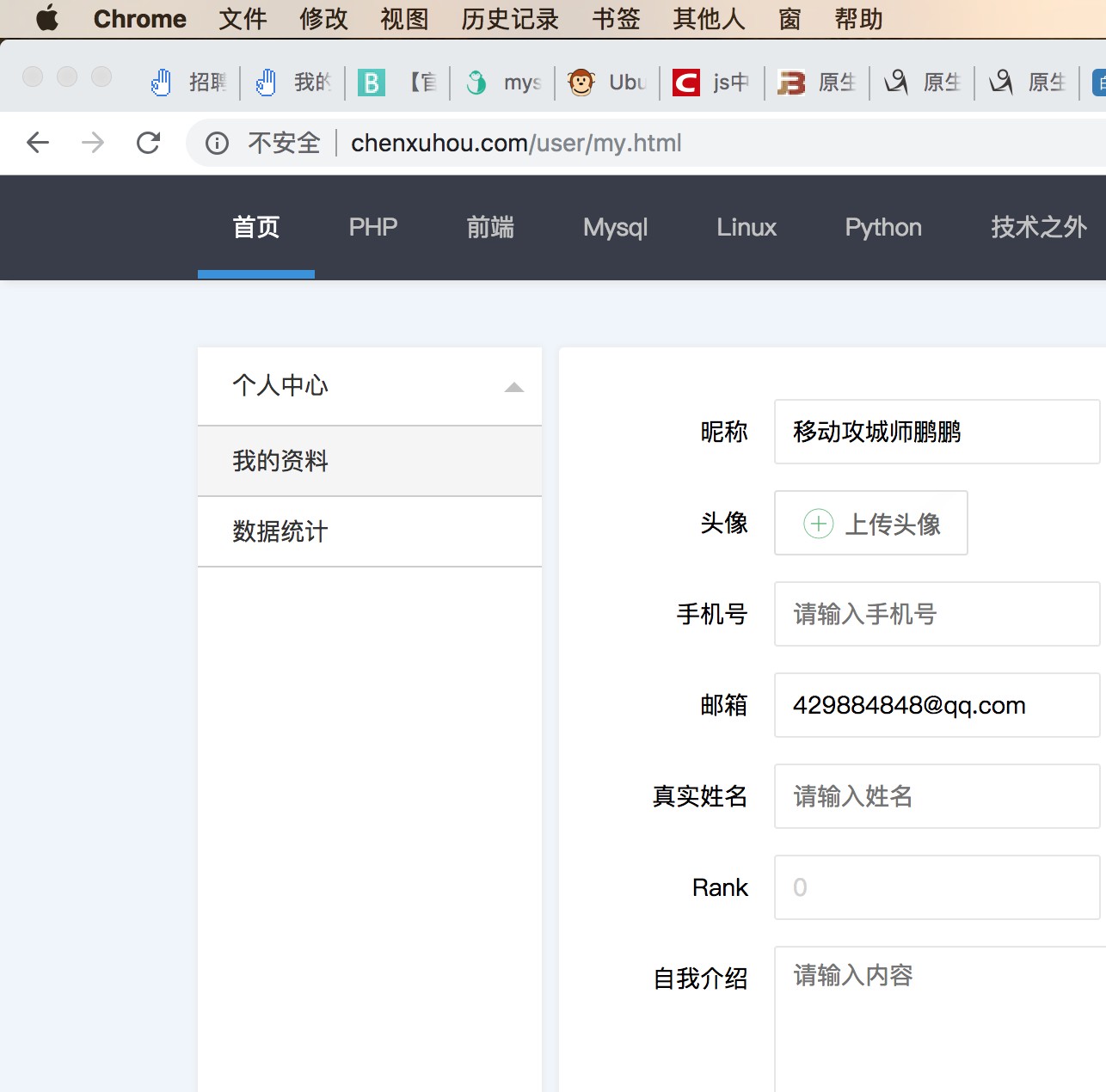$users = DB::table('users')->get();
foreach ($users as $user)
{
var_dump($user->name);
}
从数据表中分块查找数据列
DB::table('users')->chunk(100, function($users)
{
foreach ($users as $user)
{
//
}
});
通过在 闭包 中返回 false 来停止处理接下来的数据列:
DB::table('users')->chunk(100, function($users)
{
//
return false;
});
从数据表中取得单一数据列
$user = DB::table('users')->where('name', 'John')->first();
var_dump($user->name);
从数据表中取得单一数据列的单一字段
$name = DB::table('users')->where('name', 'John')->pluck('name');
取得单一字段值的列表
$roles = DB::table('roles')->lists('title');
这个方法将会返回数据表 role 的 title 字段值的数组。你也可以通过下面的方法,为返回的数组指定自定义键值。
$roles = DB::table('roles')->lists('title', 'name');
指定查询子句 (Select Clause)
$users = DB::table('users')->select('name', 'email')->get();
$users = DB::table('users')->distinct()->get();
$users = DB::table('users')->select('name as user_name')->get();
增加查询子句到现有的查询中
$query = DB::table('users')->select('name');
$users = $query->addSelect('age')->get();
使用 where 及运算符
$users = DB::table('users')->where('votes', '>', 100)->get();
「or」语法
$users = DB::table('users')
->where('votes', '>', 100)
->orWhere('name', 'John')
->get();
使用 Where Between
$users = DB::table('users')
->whereBetween('votes', [1, 100])->get();
使用 Where Not Between
$users = DB::table('users')
->whereNotBetween('votes', [1, 100])->get();
使用 Where In 与数组
$users = DB::table('users')
->whereIn('id', [1, 2, 3])->get();
$users = DB::table('users')
->whereNotIn('id', [1, 2, 3])->get();
使用 Where Null 找有未配置的值的数据
$users = DB::table('users')
->whereNull('updated_at')->get();
Dynamic Where Clauses
You may even use "dynamic" where statements to fluently build where statements using magic methods:
$admin = DB::table('users')->whereId(1)->first();
$john = DB::table('users')
->whereIdAndEmail(2, 'john@doe.com')
->first();
$jane = DB::table('users')
->whereNameOrAge('Jane', 22)
->first();
排序(Order By)、分群(Group By) 及 Having
$users = DB::table('users')
->orderBy('name', 'desc')
->groupBy('count')
->having('count', '>', 100)
->get();
偏移(Offset) 及 限制(Limit)
$users = DB::table('users')->skip(10)->take(5)->get();
Joins
查询构造器也可以使用 join 语法,看看下面的例子:
基本的 Join 语法
DB::table('users')
->join('contacts', 'users.id', '=', 'contacts.user_id')
->join('orders', 'users.id', '=', 'orders.user_id')
->select('users.id', 'contacts.phone', 'orders.price')
->get();
Left Join 语法
DB::table('users')
->leftJoin('posts', 'users.id', '=', 'posts.user_id')
->get();
你也可以指定更高级的 join 子句:
DB::table('users')
->join('contacts', function($join)
{
$join->on('users.id', '=', 'contacts.user_id')->orOn(...);
})
->get();
如果你想在你的 join 中使用 where 型式的子句,你可以在 join 子句里使用 where 或orWhere 方法。下面的方法将会比较 contacts 数据表中的 user_id 的数值,而不是比较两个字段。
DB::table('users')
->join('contacts', function($join)
{
$join->on('users.id', '=', 'contacts.user_id')
->where('contacts.user_id', '>', 5);
})
->get();
高级 Wheres
群组化参数
有些时候你需要更高级的 where 子句,如「where exists」或嵌套的群组化参数。Laravel 的查询构造器也可以处理这样的情况:
DB::table('users')
->where('name', '=', 'John')
->orWhere(function($query)
{
$query->where('votes', '>', 100)
->where('title', '<>', 'Admin');
})
->get();
上面的查找语法会产生下方的 SQL:
select * from users where name = 'John' or (votes > 100 and title <> 'Admin')
Exists 语法
DB::table('users')
->whereExists(function($query)
{
$query->select(DB::raw(1))
->from('orders')
->whereRaw('orders.user_id = users.id');
})
->get();
上面的查找语法会产生下方的 SQL:
select * from users
where exists (
select 1 from orders where orders.user_id = users.id
)
聚合
查找产生器也提供各式各样的聚合方法,如 count、max、min、avg 及 sum。
使用聚合方法
$users = DB::table('users')->count();
$price = DB::table('orders')->max('price');
$price = DB::table('orders')->min('price');
$price = DB::table('orders')->avg('price');
$total = DB::table('users')->sum('votes');
原生表达式
有些时候你需要使用原生表达式在查找语句里,这样的表达式会成为字串插入至查找,因此要小心勿建立任何 SQL 注入点。要建立原生表达式,你可以使用 DB::raw 方法:
使用原生表达式
$users = DB::table('users')
->select(DB::raw('count(*) as user_count, status'))
->where('status', '<>', 1)
->groupBy('status')
->get();
添加
添加数据进数据表
DB::table('users')->insert(
['email' => 'john@example.com', 'votes' => 0]
);
添加自动递增 (Auto-Incrementing) ID 的数据至数据表
如果数据表有自动递增的ID,可以使用 insertGetId 添加数据并返回该 ID:
$id = DB::table('users')->insertGetId(
['email' => 'john@example.com', 'votes' => 0]
);
注意: 当使用 PostgreSQL 时,insertGetId 方法会预期自动增加的字段是以「id」为命名。
添加多个数据进数据表
DB::table('users')->insert([
['email' => 'taylor@example.com', 'votes' => 0],
['email' => 'dayle@example.com', 'votes' => 0]
]);
更新
更新数据表中的数据
DB::table('users')
->where('id', 1)
->update(['votes' => 1]);
自增或自减一个字段的值
DB::table('users')->increment('votes');
DB::table('users')->increment('votes', 5);
DB::table('users')->decrement('votes');
DB::table('users')->decrement('votes', 5);
也能够同时指定其他要更新的字段:
DB::table('users')->increment('votes', 1, ['name' => 'John']);
删除
删除数据表中的数据
DB::table('users')->where('votes', '<', 100)->delete();
删除数据表中的所有数据
DB::table('users')->delete();
清空数据表
DB::table('users')->truncate();
Unions
查询构造器也提供一个快速的方法去「合并 (union)」两个查找的结果:
$first = DB::table('users')->whereNull('first_name');
$users = DB::table('users')->whereNull('last_name')->union($first)->get();
unionAll 方法也可以使用,它与 union 方法的使用方式一样。
悲观锁定 (Pessimistic Locking)
查询构造器提供了少数函数协助你在 SELECT 语句中做到「悲观锁定」。
想要在 SELECT 语句中加上「Shard lock」,只要在查找语句中使用 sharedLock 函数:
DB::table('users')->where('votes', '>', 100)->sharedLock()->get();
要在 select 语法中使用「锁住更新(lock for update)」时,你可以使用 lockForUpdate方法:
DB::table('users')->where('votes', '>', 100)->lockForUpdate()->get();






